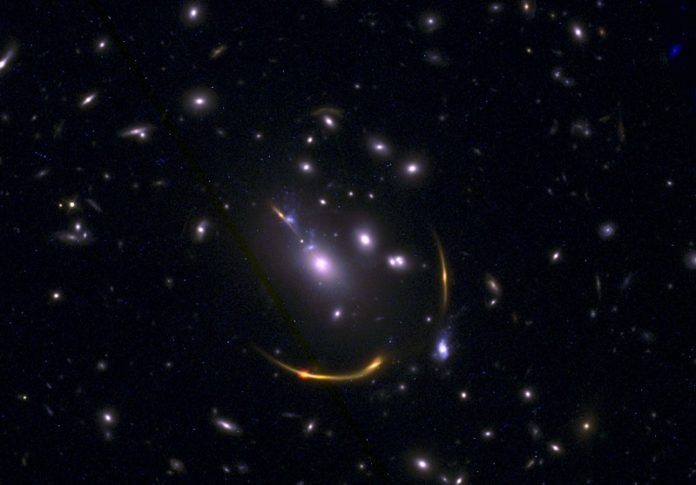
“Live fast, die young” could be the motto of six early, massive, “dead” galaxies that ran out of the cold hydrogen gas needed to make stars early in the life of the universe.
These galaxies lived fast and furious lives, creating their stars in a remarkably short time, but then ran out of gas and shut down star formation.
Without more fuel for star formation, these galaxies were literally running on empty.
Why this happened at such early times is a mystery, according to a paper published Wednesday in the journal Nature and co-authored by Christina Williams, an assistant research professor of astronomy at the University of Arizona.
NASA’s Hubble Space Telescope, together with the Atacama Large Millimeter/submillimeter Array, or ALMA, in northern Chile, found these odd galaxies while looking back billions of years to the peak of star birth in the universe.
When the universe was about 3 billion years old, just 20% of its current age, it experienced the most prolific period of star birth in its history.
“It is a longstanding mystery why some galaxies stop forming stars during this era when the other galaxies are vigorously forming stars,” Williams said.
“While other galaxies forming stars have lots of cold gas available to fuel star formation, we now know that in these ‘dead’ galaxies there’s essentially no fuel left.”
Nature’s very own telescopes
The study of these early, distant, dead galaxies was part of the REQUIEM program, which stands for Resolving QUIEscent Magnified Galaxies at High Redshift.
Redshift happens when light is stretched by the expansion of space and appears shifted toward the red part of the spectrum. The farther away a galaxy is from the observer, the redder it appears.
To measure light from very distant galaxies, the REQUIEM team uses extremely massive foreground galaxy clusters as natural telescopes.
The immense gravity of a galaxy cluster warps space, bending and magnifying light from background objects, in a phenomenon called strong gravitational lensing.
When an early, massive and very distant galaxy is positioned behind such a cluster, it appears greatly stretched and magnified, allowing astronomers to study details that would otherwise be impossible to see.
Only by combining the exquisite resolution of Hubble and ALMA with strong lensing was the REQUIEM team able to understand the formation of these six galaxies, which appear as they did only a few billion years after the Big Bang.
“Finding a chance alignment like this one is incredibly rare and requires searching the entire sky,” Williams said. “Without the fortuitous alignment and strong gravitational lensing, we would not have been able to observe these extremely faint galaxies.”
“REQUIEM pulled together the largest sample to date of these rare, strong-lensed, dead galaxies in the early universe, and strong lensing is the key here,” said Mohammad Akhshik, principal investigator of the Hubble observing program.
“It amplifies the light across all wavelengths so that it’s easier to detect, and you also get higher spatial resolution when you have these galaxies stretched across the sky. You can essentially see inside of them at much finer physical scales to figure out what’s happening.”
Live fast, die young
Why these galaxies stopped forming stars so early is still a puzzle. These dead galaxies appear to remain dead even after 11 billion years, in the present-day universe.
“We don’t really understand why they remain mostly dead after their initial burst of star-formation is halted,” Williams said. “Something keeps them dead.”
Gas, which when cold can rapidly collapse under its own gravity to make stars, is abundant in the distant universe. So, why any galaxies in this era of the distant universe would lack cold gas is still a puzzle, Williams said.
Katherine Whitaker, the paper’s first author who is an assistant professor at the University of Massachusetts Amherst, proposes several possible explanations.
“Did a supermassive black hole in the galaxy’s center turn on and heat up all the gas? If so, the gas could still be there, but now it’s hot.
Or, it could have been expelled and now it’s being prevented from accreting back onto the galaxy.
Or did the galaxy just use it all up, and the supply is cut off? These are some of the open questions that we’ll continue to explore with new observations down the road,” Whitaker said.



